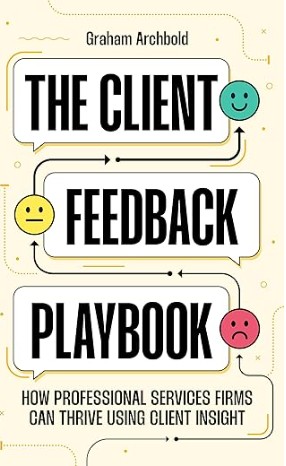
Last week I was joined by 18 delegates from solicitor, patent attorney, accountancy, surveying and consulting practices for PM Forum’s “Proactive Marketing Executive” full day workshop. The poll results and delegate comments are shown below. We cover a huge amount during the day: strategic marketing, operational marketing, managing campaigns, resource management, working with fee-earners and selling and client relationship skills. Each session I try to focus on a few key themes for a summary article and this time it’s: Proactive Marketing Executive – Plans, Budgets, Relationships and Career Development.
Strategic marketing/BD plans
Align plans
Much of the complexity of professional services marketing arises from the need to have plans at different levels.
For example, many firms will have sector (go to market) plans which draw on and integrate with department, product or service plans. The classic matrix approach.
But added to this are the firm’s overall plans (including brand and positioning) and plans for different territories and regions. And then there might be plans for specific firm-wide initiatives and campaigns that cross sectors and service lines.
There might also be plans for smaller teams and individual fee-earners. A core challenge is finding ways for all these different plans to align and integrate – so you can choose which priorities deserve the lion’s share of resources. Strategy is about making choices. “Spray and pray” is rarely successful.
Marketing Vs. Business Development plans
There were questions about the differences between marketing plans and business development plans.
There is a lot of information about marketing plans – this article outlines simple and complex marketing plan structures. And this article considers how to introduce a marketing planning process into a professional services firm. Ideally marketing and business development plans should be integrated – but in reality they are often separate.
Sometimes, the marketing plan covers the strategic analysis and aims and operational activities up to the point where leads are generated. These plans are sometimes the preserve of the central marketing team. They might omit the sales element (how to convert those leads) or the relationship management activities for existing clients and referrers which is often the focus of business development plans. Very often the marketing plans have a firm-wide or sector focus.
In larger firms, the business development plans might focus entirely on the existing and target relationships that need to be nurtured. This moves the plan further towards a KAM or ABM approach. The business development plans are often the preserve of the fee-earners.
Most BD plans will include an element of pipeline management – tracking the stages of each opportunity at each organisation through the sales funnel. So in a nutshell, the BD plan is often more focused on identifying and developing live sales opportunities. Often, the BD plan will focus on a particular department or service line.
Many firms have a proforma marketing and business development plan that covers elements such as:
Context
- Market/sector description (including opportunity analysis)
- Position in the market (how you compete)
- Portfolio of existing clients (and segmentation)
- Range of the services being promoted
- Links to the firm’s plan and other teams
Aims/Objectives
- Fee and profit targets
- Existing client and work targets
- New client and work targets
- Awareness and positioning targets (e.g. rankings, directories)
- Monitoring and measurement systems and reporting activities
Activities and actions
- Product or service development
- Response to changing environment and new needs
- Innovation and deployment of know-how, research or technology
- Recruitment of specific expertise
- Learning and development of fee-earners
- Profile raising/Campaigns
- Internal communications
- Campaign topics and key messages
- Media relations and articles
- Content management plan
- Web site and social media activities
- Conferences, events, roundtables and presentations
- Relationship building
- Internal collaboration and cross-selling
- Collaborative/joint marketing with key associations
- Client inhouse seminars and webinars
- Social events
- Networking at target associations
- Existing client relationship activities (Connecting with specific individuals)
- Referrer management programmes
- Pitching and tendering
Many delegates reported a key challenge in planning was anticipating and planning for the shift from online communications to more in-person or hybrid environment. Many firms are developing parallel plans – to accommodate a continuation of online interaction or a return to face-to-face scenarios.
Marketing Budgets
There were questions about marketing budgets.
Theoretically we should adopt an objective and task method. This involves looking at the aims and what tasks needs to be done to achieve those aims. And then calculating the cost of those strategies and actions. This is Zero-Based Budgeting (ZBB) which involves developing a new budget from scratch every time.
In reality, firms will set budgets based on things such as: what we spent last year, a percentage of anticipated revenue or profit, rules-of-thumb (e.g. 2 – 5% of revenue) or benchmarks. For example, a recent article reported that according to Gartner’s 2016-2017 CMO Spend Survey, the average marketing spend is 12% of annual revenue. The February 2018 CMO Survey released by Deloitte, the American Marketing Association and Duke University provided insight into marketing spend by industry:
- Banking/Finance/Insurance (9.2% of annual revenue)
- Communications/Media (9.0% of annual revenue)
- Service Consulting (7.5% of annual revenue)
- Tech/Biotech/Software (9.7% of annual revenue)
So ideally before you attempt to develop a marketing/BD budget you will have marketing and/or business development plan – or even a campaign plan – so you can calculate the potential returns and the costs (both cash and fee-earner and support staff time).
This forms the basis of the business case and also the foundations of the Return on Investment (ROI) analysis. Too often M&BD budgets in professional services firms fail to analyse the time or opportunity costs to properly reflect the investment required. ROI in professional service firm marketing (kimtasso.com) considers this issue in more detail.
Relationships with fee-earners
Throughout the day there were discussions about forging stronger relationships with fee-earners.
Primarily these focused on how to engage fee-earners in the planning process or gain buy-in to projects and initiatives. The images generated on how we perceive fee-earners and are seen by them were insightful – from pesky insects, blockers, Edvard Munch’s The Scream to juggling plates and jigsaw puzzles. There are many resources on achieving buy-in including:
- Animal magic of buy-in and stakeholder engagement (Video) (kimtasso.com)
- Seven thoughts on stakeholder management, engagement and buy-In (kimtasso.com)
- all about buy-in in professional services (Manchester and Dublin 2019) (kimtasso.com)
- workshop on buy-in – Professional Marketing Forum psychology and management (kimtasso.com)
Engage with reluctant fee-earners – “The Unreachables”
There were excellent suggestions to help one delegate who reported difficulties with fee-earners who didn’t respond to emails, declined contact requests and disregarded deadlines. Suggestions included using PAs and juniors in the team, identifying the best times of the day, sitting within their team and attempting to “bump into” them when in the office.
There were also ideas around presenting them with data and evidence to highlight opportunities and threats or show them what competitors or colleagues are achieving. These and other suggestions to engage with fee-earners are summarised in this article titled “Getting blood out of a stone”.
Deal with “difficult” behaviours
There was some discussion about dealing with particular types of challenging behaviour – and we looked at the causes, reasons and solutions of stubbornness and micro-management in particular.
We considered the power of empathy in seeing things from the fee-earners’ point of view. We also looked at reframing and depersonalising so that difficult interactions were less emotionally draining. I highlighted various resources for dealing with “difficult” interactions:
- Resources to help you deal with difficult interactions (kimtasso.com)
- Dealing with “difficult” people – Nine strategies for dealing with arrogance (kimtasso.com)
- Soft skills – Dealing with difficult conversations (kimtasso.com)
- How the parent, adult, child (PAC) model helps with difficult interactions (kimtasso.com)
- Business relationships – Using the drama triangle to resolve conflict (kimtasso.com)
- Managing client complaints – Process, anger and apologies (kimtasso.com)
- Emotional Regulation – A key element of Emotional Intelligence (EQ) (kimtasso.com)
- Assertiveness skills – getting what you want and saying “No” (kimtasso.com)
- Team management issues – Managing up, boundaries and broken relationships (kimtasso.com)
- Book review – Persuasion: The art of influencing people by James Borg (kimtasso.com)
Career development
Throughout the day we talked about how the careers of marketing and business development executives might develop.
Half of the delegates had a formal marketing qualification and only 12% had received sales training. So formal qualifications and training are something for many to consider. Most professional services firms will support their people who wish to qualify with the Chartered Institute of Marketing (CIM).
Trends in mainstream marketing and technology
Some delegates asked about trends in marketing and the impact this will have on the future demand for existing and new skills. The World Economic Forum reviews global occupations and reports on key trends affecting employability. The last WEF Future of Jobs report (2018) reported “amongst the trending skills in demand are: analytical thinking and innovation, active learning and learning strategies, creativity, technology design and programming, critical thinking and analysis, complex problem-solving, leadership and social influence, emotional intelligence, reasoning and systems analysis”.
A recent book on advanced marketing management discusses the future need for skills in neuroscience, adaptability, predictability and innovation. This book provides an overview of innovation in marketing.
There are also important implications for technical skills when you consider the rapid development of marketing technology (see this article on MarTech in professional services The growth of MarTech in professional services – an overview (kimtasso.com))
Trends in professional services marketing
There are many sources of information about marketing and BD skills in professional services.
This includes specialist recruitment agencies (e.g. Totum Partners who explained some trends for M&BD careers in this article.
There are also research companies specialising in professional services. For example, Meridian West produces regular benchmarks on marketing in professional services marketing and changing demands for skill sets.
The impact of digital marketing within the professions has been profound and analytical and digital skills are a high priority. As well as excellent training courses from PM Forum in this area there are free resources from HubSpot Academy and Google Digital Garage. These courses also offer accreditation and certificates of competence.
But we mustn’t forget that a major part of B2B professional services marketing is about relationships. And selling. And people skills. So emotional intelligence and soft skills are required to support relationships with team members and team earners – and also critical for leadership roles.
There’s a short video on soft skills (featuring the Worry Monster)
And another video on empathy and emotional intelligence. There’s also a video on curiosity which supports learning and unlearning.
And my book on Better Business Relationships covers many skills to support both internal and external relationship building.
Gain experience in new areas
Where marketers and business developers are in specialist roles (for example, in events or digital marketing or design) it can be difficult to gain experience in other areas of marketing and business development.
There was a discussion about how this might be achieved. Suggestions included:
- Talking to your line manager to outline the areas you wish to develop
- Volunteering to help on projects where you will gain exposure to those areas
- Attending training sessions and talks (the PM Forum provides a wide range of short, free lunchtime webinars on a wide range of topics)
- Reading marketing and sales book and sector magazines
- Short job swaps or shadowing of team members
- Attending meetings where other topics are discussed
Many of the delegates liked the idea of applying the marketing planning process – analyse the situation, identify strengths and opportunities, set goals and plan action – to their own careers.
Delegate poll results and feedback
We started with a discussion on what it means to be proactive: Thinking ahead, taking the initiative and anticipating needs were mentioned. Delegate indicated that they spent between 10% to 40% of their time being proactive – although the average was around 20%.
Delegate confidence levels
| Start of session | End of session | |
|
1 – Not at all confident |
||
|
2 |
||
|
3 |
6% |
|
|
4 |
6% |
|
|
5 |
|
|
|
6 |
17% |
13% |
|
7 |
39% |
31% |
|
8 |
33% |
44% |
|
9 |
13% |
|
| 10 – Very confident |
|
50% of the delegates had a qualification in marketing.
Delegates roles mostly:
- 6% Strategic marketing
- 39% Tactical marketing/communications
- 0% Selling/pitching
- 0% Relationship management/development
- 6% Something else
Segmentation approaches used by firms:
- 71% Market or industry sector
- 35% Size of business
- 25% Job function
- 35% Geography/region
- 41% Nature of relationship
- 29% A mixture
Delegates’ firms had marketing/BD plans for:
- 39% The firm
- 28% The markets we serve
- 28% The products/services we provide
- 17% Each territory/region
- 67% A mixture
How well does your firm track/monitor the source of leads?
- 6% Really well across the firm
- 67% Good in some teams
- 17% OK
- 11% Not very well
Do you measure client satisfaction?
- 6% Yes – across the whole firm and all clients regularly
- 13% Yes – for our largest clients
- 75% Yes – for some clients or periodically
- 6% No
What types of external consultants does your firm use?
- 0% Brand
- 65% Design and creative
- 41% PR/Public Relations
- 59% Web development
- 18% SEO
- 0% PPC
- 6% Data management/Analytics
- 24% Mailings
- 18% Other (ghost writers, event planners)
How often do you experience difficulties in your relationships with fee-earners?
- 0% Never
- 83% Occasionally
- 17% Often
- 0% All the time
Have you had formal training in selling?
- 12% Yes
- 12% No – self-taught/experience
- 76% No – Unfamiliar with sales/selling concepts
Where is most of your time spent?
- 50% Marketing/BD planning
- 38% Awareness raising
- 0% Lead generation
- 6% Winning new business
- 6% Developing existing relationships
Delegate reflections, key points and actions from the day
Topics
- Enjoyed learning the different marketing/BD theories
- Good to refresh on marketing strategies an tools
- Felt reassured that there is still so much to learn about marketing professional services
- Trying to communicate and influence around why we need their support an buy in is an ongoing upwards battle
- Empathy with fee-earners point of view and styles
- Campaign management attributes and skills
Interaction with peers
- Enjoyed networking with people in the same field and similar roles
- A lot of people are in the same position as me
- Good to hear other people’s experience
- Great to know others are working on similar strategies (and (unfortunately) experiencing the same frustrations – trying to be strategic, proactive and innovative but often just forced to being reactive to fee-earners wishes and demands
Ideas and actions
- Taking away lots of ideas from the session
- Develop skills to support buy-in – persuasion, story-telling and empathy
- Not sure we ever measure client satisfaction – this is something I will investigate
- Develop a career plan – and short-term goals in addition to medium and long term goals
- Look into firm’s strategies
- Identify my skill and experience gaps
- Re-introduce myself to the team and fee-earners
- Help new recruits connect with fee-earners
- Develop a better understanding of the firm and teams’ strategies
- A person’s behaviour may be due to other issues such as fear, lack of knowledge – learn to depersonalise
- Improve soft skills to help relationships with difficult behaviours
- Make the content on our social media channels more personal and authentic
- Reframing difficult people into a positive – stubbornness could have a reason behind it
Thanks to everyone who attended and participated. And thanks to Nadia Cristina of PM Forum who was my technical co-host for the day.
PS How much information do we retain when seeing or hearing things?
At the session I shared a statistic that said we only process about 40% of what we hear.
One of the delegates asked if I knew how much we retained of what we read.
So I did a little digging. And it’s a minefield!
Back in 1946 Edgar Dale created something called the Cone of Experience – with no numbers. Somewhere over time numbers were added to this diagram: saying we retain 10% of what we hear, 20% of what we read, 30% of what we see, 50% of what we see and hear, 70% of what we say and write and 90% of what we do. However, these figures were debunked in an article in 2015.
Other research I found – interestingly related to the effectiveness of witnesses in legal trials – said “estimates of how much of a conversation can be accurately recalled in detail after delays of several minutes to several weeks are quite low and range from 0% to 20% of the total idea units that occurred in the original conversation”.
Another article said that people usually remember about 17% to 25% of the things they listen to!
Perception, attention and retention are clearly areas requiring further scientific research!








